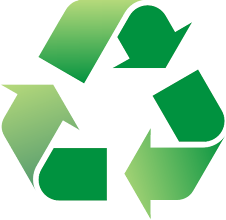The Polimer Name such as Other plastics, including Acrylic, Acrylonitrile butadiene styrene, Fiberglass, Nylon, Polycarbonate, and Polylactic acid.
Poly(methyl methacrylate) (PMMA) poly(methyl 2-methylpropenoate) is a transparent thermoplastic. Chemically, it is the synthetic polymer of methyl methacrylate. It is sold under many trade names, including Policril, Plexiglas, Gavrieli, Vitroflex, Limacryl, R-Cast, Per-Clax, Perspex, Plazcryl, Acrylex, Acrylite, Acrylplast, Altuglas, Polycast, Oroglass, Optix and Lucite and is commonly called acrylic glass, simply acrylic, perspex or plexiglas. Acrylic, or acrylic fiber, can also refer to polymers or copolymers containing polyacrylonitrile. The material was developed in 1928 in various laboratories and was brought to market in 1933 by Rohm and Haas Company.
PMMA is often used as an alternative to glass, and in competition with polycarbonate (PC). It is often preferred because of its moderate properties, easy handling and processing, and low cost, but behaves in a brittle manner when loaded, especially under an impact force. To produce 1 kg of PMMA, about 2 kg of petroleum is needed. PMMA ignites at 460 °C and burns, forming carbon dioxide, water, carbon monoxide and low molecular weight compounds, including formaldehyde.
It is a copolymer made by polymerizing styrene and acrylonitrile in the presence of polybutadiene. The proportions can vary from 15 to 35% acrylonitrile, 5 to 30% butadiene and 40 to 60% styrene. The result is a long chain of polybutadiene criss-crossed with shorter chains of poly(styrene-co-acrylonitrile). The nitrile groups from neighboring chains, being polar, attract each other and bind the chains together, making ABS stronger than pure polystyrene. The styrene gives the plastic a shiny, impervious surface. The butadiene, a rubbery substance, provides resilience even at low temperatures. For the majority of applications, ABS can be used between −25 and 60 °C as its mechanical properties vary with temperature. The properties are created by rubber toughening, where fine particles of elastomer are distributed throughout the rigid matrix. Production of 1 kg of ABS requires the equivalent of about 2 kg of oil for raw materials and energy. It can also be recycled.
Fiberglass, (also called fibreglass and glass fibre), is material made from extremely fine fibers of glass. It is used as a reinforcing agent for many polymer products; the resulting composite material, properly known as fiber-reinforced polymer (FRP) or glass-reinforced plastic (GRP), is called "fiberglass" in popular usage. Glassmakers throughout history have experimented with glass fibers, but mass manufacture of fiberglass was only made possible with the invention of finer machine tooling. In 1893, Edward Drummond Libbey exhibited a dress at the World's Columbian Exposition incorporating glass fibers with the diameter and texture of silk fibers. This was first worn by the popular stage actress of the time Georgia Cayvan.
What is commonly known as "fiberglass" today, however, was invented in 1938 by Russell Games Slayter of Owens-Corning as a material to be used as insulation. It is marketed under the trade name Fiberglas, which has become a genericized trademark. A somewhat similar, but more expensive technology used for applications requiring very high strength and low weight is the use of carbon fiber.
Nylon is a generic designation for a family of synthetic polymers known generically as polyamides and first produced on February 28, 1935 by Wallace Carothers at DuPont. Nylon is one of the most commonly used polymers.
Polycarbonates are a particular group of thermoplastic polymers. They are easily worked, moulded, and thermoformed; as such, these plastics are very widely used in the modern chemical industry. Their interesting features (temperature resistance, impact resistance and optical properties) position them between commodity plastics and engineering plastics. Polycarbonates do not have a unique plastic identification code and are identified as Other, 7.
Polylactic acid or polylactide (PLA) is a biodegradable, thermoplastic, aliphatic polyester derived from renewable resources, such as corn starch (in the U.S.) or sugarcanes (rest of world). Although PLA has been known for more than a century, it has only been of commercial interest in recent years, in light of its biodegradability.
Source : http://en.wikipedia.org/wiki




![Validate my Atom 1.0 feed [Valid Atom 1.0]](valid-atom.png)

No comments:
Post a Comment